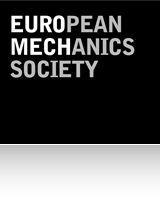This Euromech colloquium covers many areas of fundamental and applied research since vortices have been identifed as central patterns in many fluid flows. These coherent structures may strongly interact with external fields such as gravity, sound, magnetic fields. For instance, density gradients may be modified by the presence of vortices which are themselves altered by gravity waves. As a result, the topic is investigated by many different scientific communities, such as applied mathematics (singularity problems), fundamental hydrodynamics (turbulence, shear flow or boundary layer instabilities), acoustics (sound propagation and scattering by vortices), plasma physics (dynamo effect), mechanical engineering or aeronautics (flow control, trailing edge vortex), geophysics or meteorology (interaction of density gradients and vortices), environmental sciences (polar vortex, tornadoes dynamics, transport of Plankton by coherent vortices in the ocean). This topic possesses quite a few potential industrial applications, for instance : drag reduction in transport (plane, car, ...), enhanced mixing procedure, noise reduction, ultrasonic devices for flow measurement, meteorological models, ...The study of vortex and field interactions is a plurisciplinary subject. Classical vortex dynamics has made some remarkable progresses since the identification of vortices in laminar or turbulents flows. The growing availability during the past 10 years of fast computers, sophisticated measurements or control techniques, allows for the development of a growing number of new fluid flow applications as well as the possibility to address new fundamental problems. Indeed it is now possible to face more intricated situations containing fluid flows and fields e.g. the dynamo effect. In that perspective, it seems important to gather the various communities which are concerned by such a topic. This Colloquium will bring together worldwide specialists in order to present various aspects of the vortex dynamics and field interactions.
